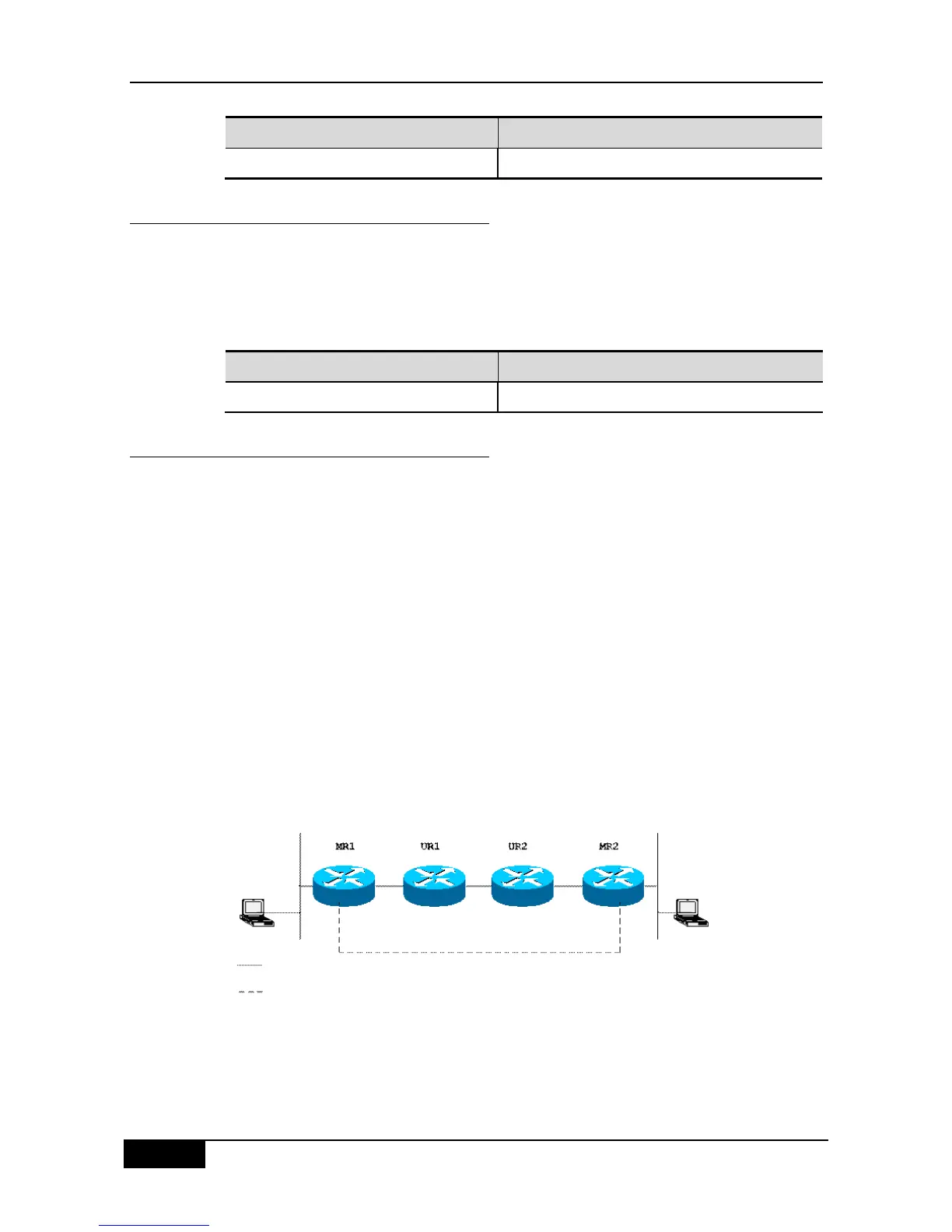35.6.1.2 Configuring IP Multicast Boundary
Execute ip multicast boundary to configure multicast boundary of an interface and execute
no ip multicast boundary to disable the configured boundary. The second configuration
command will cover the first one.
Execute the following command in the interface configuration mode:
35.6.1.3 Configuring IP Multicast Static Route
Multicast static route allows difference between multicast forwarding path and unicast path.
RPF inspection will be processed in case of multicast packet forwarding. The actual
receiving interface is the interface expected to receive packets (the interface is the next hop
of unicast reaching the sender). The inspection is reasonable if the topologies of unicast and
multicast are the same. But in some cases, unicast path is expected to differ from that of
multicast.
The most common cases adopt tunnel technology. GRE tunnel is configured between two
switches when multicast protocol is not supported by the switches on one path. Each unicast
switch (UR) only supports the unicast packets while each multicast switch (MR) supports
multicast packets in the figure below. Source sends multicast packets to destination by MR1
and MR2. MR2 forwards multicast packets only when they are received from tunnel. If so,
unicast packets will also pass the tunnel when forwarded from destination to source. As we
know, it is slower to forward packets through tunnel than direct sending.
Figure 35-5 Schematic Diagram of Configuring Multicast Static Routes
Through multicast static route configuration, a router can implement RPF inspection
according to the configured information instead of unicast routing list. Therefore, multicast
packets use tunnel while unicast packets do not. Multicast static routes only exist locally.
They will not declare outgoing or implement routing forwarding.

